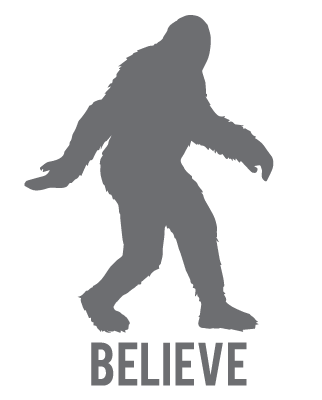Adventure motorcycling is all about pushing boundaries—your own and your bike’s. Whether you’re exploring dirt trails, rocky mountain passes, or sandy dunes, mastering a few key techniques can significantly enhance your riding experience and, more importantly, keep you safe. Here are seven essential adventure riding techniques every adventure motorcycle rider should know.
1. Mastering Body Positioning
Proper body positioning is the foundation of adventure riding. A well-balanced rider can navigate rough terrains, maintain control, and reduce fatigue during long rides.
How to do it:
Standing position: When off-road, stand on the foot pegs with knees slightly bent and your elbows high. This stance allows your body to act as a shock absorber and gives you more control over the bike.
Leaning into turns: Shift your weight to the outside peg while leaning the bike into the turn. This helps maintain balance on uneven ground.
On the road: For smoother rides, keep your body relaxed with your knees gripping the tank lightly and your arms slightly bent to absorb vibrations.
Mastering body positioning helps you stay agile and ready to respond to the unpredictable nature of off-road trails.
2. Throttle Control
Throttle control is crucial, especially when riding on loose surfaces like gravel, sand, or mud. Too much throttle can lead to loss of traction, while too little can cause stalling or poor momentum.
How to do it:
Gentle acceleration: Apply smooth, steady throttle inputs to maintain traction. Rapid or jerky twists of the throttle can cause wheel spin or skidding, especially on loose or wet surfaces.
Power modulation: Adjust your throttle based on terrain. For uphill climbs, give the bike a bit more power, but maintain a steady pace. For descents or technical sections, reduce throttle input to stay in control.
Good throttle control not only boosts your confidence but also helps you avoid getting stuck in tricky spots.
3. Braking Skills
Braking is a delicate balance, particularly in off-road conditions. Proper use of both front and rear brakes is vital to maintaining control on challenging terrain.
How to do it:
Front brake dominance: On most surfaces, your front brake provides about 70% of your stopping power. However, use it gently on loose terrain to avoid locking up the wheel.
Rear brake for stability: The rear brake helps stabilize the bike during braking, especially on downhill or off-camber sections. Use it to control speed and maintain balance.
Braking downhill: When descending steep terrain, rely more on the rear brake to prevent the front wheel from washing out. Apply the brakes smoothly to avoid losing traction.
Understanding when and how to apply your brakes effectively can make the difference between smooth control and a slide-out.
4. Cornering Off-Road
Cornering on loose, uneven surfaces is one of the trickiest maneuvers to master in adventure riding. But with the right technique, it becomes much easier and safer.
How to do it:
Weight distribution: As you approach a turn, shift your weight to the outside of the bike while leaning it into the turn. This provides better traction and control.
Throttle control: Roll off the throttle as you enter the turn and apply a little more throttle as you exit to maintain balance and speed.
Look ahead: Always keep your eyes on the exit point of the turn. This helps you anticipate and adjust for obstacles or changes in terrain.
With practice, you’ll be able to tackle off-road corners confidently, even on loose or gravelly surfaces.
5. Weight Distribution
Proper weight distribution is key to handling your motorcycle, especially on technical terrain like steep climbs, descents, or uneven surfaces.
How to do it:
Climbing hills: Lean forward to shift your weight over the front wheel, which improves traction and keeps the front end from lifting.
Descending hills: Shift your weight back toward the rear of the bike. This helps prevent the front wheel from sliding out and gives you more control.
Riding through obstacles: If you’re crossing logs or rocks, stand up, keep your body centered, and let the bike move beneath you. This allows you to absorb impacts and keep your momentum.
Effective weight distribution reduces the strain on both you and your bike, making for a smoother, more controlled ride.
6. Reading Terrain
Being able to “read” the terrain is essential for adventure motorcyclists. The ability to anticipate what’s ahead allows you to adjust your riding style and avoid potential hazards.
How to do it:
Look ahead: Always keep your eyes on the trail ahead, scanning for rocks, ruts, water crossings, or loose gravel. This gives you time to adjust your speed or line.
Pick your path: On tricky sections, choose a line that minimizes obstacles and maximizes traction. Sometimes, the safest route is not the most obvious one.
Adapt quickly: Conditions can change in an instant, so be ready to adjust your speed, body position, or throttle based on the terrain in front of you.
A good adventure rider is always reading the landscape, making split-second decisions to ensure a safe ride.
7. Riding in Sand or Mud
Riding through sand or mud presents unique challenges. These surfaces can feel unstable and unforgiving, but the right technique can make all the difference.
How to do it:
Keep momentum: In both sand and mud, maintaining a steady pace is crucial. Slowing down too much can cause you to sink or lose balance.
Stay relaxed: Grip the handlebars lightly and let the bike move under you. Stiff arms will only make the ride more uncomfortable and harder to control.
Use body weight: Shift your weight back to keep the front wheel from digging into the sand or mud. Keep your legs loose and be ready to dab a foot if you lose traction.
With practice, you’ll find that riding on these surfaces becomes less intimidating and more of an exciting challenge.
Conclusion
Adventure riding is as much about skill as it is about the thrill of exploration. By mastering these seven essential techniques, you’ll improve your riding performance, increase your confidence, and enhance your safety on every ride. Remember, practice makes perfect. Next time you’re out on your bike, take the time to focus on these skills, and you’ll be ready to tackle any terrain with ease.
Ready for your next adventure?
Get out there, practice these techniques, and conquer new trails!










